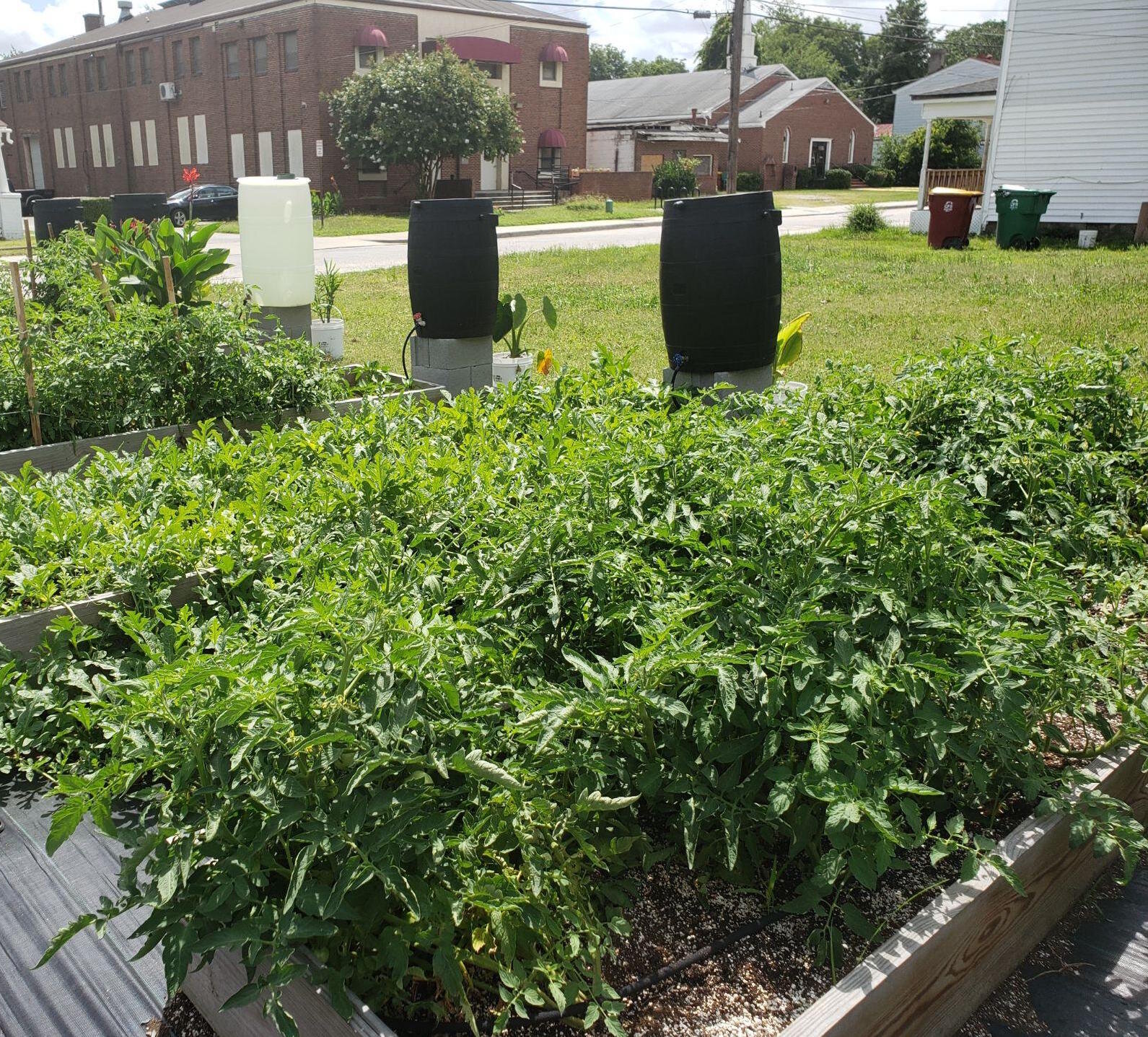Urban Ag Center Growing A Sense of Community
Harding St. Community Garden
There is something growing year round at the Harding Street Urban Ag Center in Petersburg, Virginia. But it’s what you can’t see growing that makes the center a success and a unique model for sustainable urban agriculture.
The center’s mission is to combat food insecurity in underserved communities in the city and to conduct educational programming in urban agriculture, nutrition and entrepreneurship. The center, part of the Virginia Cooperative Extension (VCE) at Virginia State University (VSU), is quietly tucked away at 453 Harding Street in a residential area.
Inside the historic building are climate-controlled food production rooms where traditional vegetables are grown using soilless media and solar panels. Outside are community gardens and orchards where residents can plant their own produce or volunteer to help maintain the gardens that supply food to those in need. But also growing is a sense of community, partnership, pride and hope. The center is changing the landscape in the city in terms of collaborative community outreach efforts, bringing together city government, residents and diverse community organizations to address food insecurity.
“In order to do community building, there has to be collaboration. One organization can’t do it alone. It takes volunteers, community members, nonprofit organizations, farmers and businesses. That’s how we make it work,” said Cynthia Martin, program director and coordinator for the center.
Since the pandemic began in March, tackling food insecurity has been the focus at the center. “The basic need for everyone is to have food to eat,” Martin said. “COVID is making it harder for a lot of people.” Long lines at local food banks punctuate the need as families scramble to make ends meet because of job losses and related financial pressures, she added.
Even before the pandemic, Petersburg was battling a food insecurity crisis along with other issues, including generational poverty, high unemployment, struggling schools, health disparities and high crime. According to an annual ranking by the Robert Wood Johnson Foundation, it is the most economically depressed locality in Virginia. Much of the city has been designated as a food desert, meaning residents don’t have easy access to nutritious foods. According to U.S. Census Bureau, Petersburg has a population of 31,346, of which 24.1% live in poverty. There are only two major grocery chains, which are located near each other, on the outskirts of town not easily accessible for many residents from the intercity.
Harding St. Community Garden Harvest
During the pandemic, in addition to growing fresh produce, the center has been busy addressing the increased need for food. It is partnering with Underground Kitchen, a Richmond, Virginia restaurant, which donates about 400 prepared lunches per week for distribution by the center. The center has also partnered with local farmers who donated a variety of produce, such as potatoes, that were used to feed students in Petersburg Public Schools. It has also partnered with other community groups and programs to provide pop-up vegetable markets in low-income neighborhoods.
Since opening, the center has garnered a lot of buy-in from the city, the community and through partnerships. In 2012, Dr. Marcus Comer, the center’s principal investigator and a VCE specialist at VSU, was awarded funding from the USDA National Institute of Food and Agriculture to refurbish the dilapidated recreational center into an indoor food production facility. The center has a proud history, and has been a vital part of the community since the 1930s. In its heyday in the 1960s, the center was known for hosting top entertainers like James Brown. Later it would become the place where basketball legend Moses Malone’s hoop dreams took sprout on the center’s basketball court.
Today the Ag center is sowing seeds of hope as it brings the community and city closer together to address food insecurity. It is also a welcoming place for residents, especially seniors and neighborhood children, who stop by to learn about agriculture, as well as school groups and others curious about indoor and outdoor food production.
The Harding Urban Street Ag Center is sowing fruit (and vegetables) literally and figuratively in the community and is a model of sustainable urban agriculture that can be replicated in struggling rural communities as well, Martin said. It is a model that commands growing attention in places where traditional farming is not possible, especially in a pandemic.


